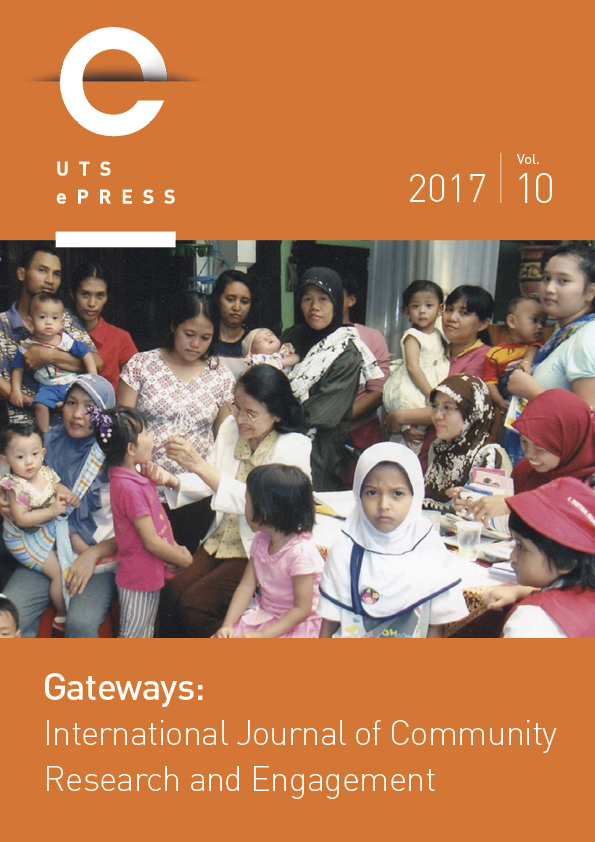Collaborative community research dissemination and networking: Experiences and challenges
Main Article Content
Abstract
This article reports on the experiences of a community-university research partnership with young people’s arts organisations that disseminated their collaborative work on resilience at a Research Showcase event held in Cardiff in June 2014. Through interviews with the young people and their collaborators, and critical reflection on our collective experiences, this article identifies some of the challenges and logistical issues that were encountered in the planning and implementation of the creative ‘Resilience House’ exhibit. We argue that the not often discussed nitty-gritty of this work needs to be brought to the foreground to help make collaborative research meaningfully inclusive if ideals of ‘cross-connection’ and a ‘new public knowledge landscape’ are to be realised. For example, we identify the potential developmental benefits to young people (rather simply framed as ‘participants’) of being involved in research dissemination, but that factoring in time, shaping expectations of all contributors, training contributors to speak to the public about their work, ensuring appropriate sub-forums are constructed and attended, discussing different cultures of language and ensuring basic needs are met are key foundations that need to be built on in future collaborative dissemination activity.
Article Details
Issue
Section
Authors who submit articles to this journal from 31st March 2014 for publication, agree to the following terms:
a) Authors retain copyright and grant the journal right of first publication with the work simultaneously licensed under a Creative Commons Attribution License that allows others to share and adapt the work with an acknowledgement of the work's authorship and initial publication in this journal.
b) Authors are able to enter into separate, additional contractual arrangements for the non-exclusive distribution of the journal's published version of the work (e.g., post it to an institutional repository or publish it in a book), with an acknowledgement of its initial publication in this journal.
c) Authors are permitted and encouraged to post their work online (e.g., in institutional repositories or on their website) prior to and during the submission process, as it can lead to productive exchanges, as well as earlier and greater citation of published work (See The Open Access Citation Advantage Service). Where authors include such a work in an institutional repository or on their website (ie. a copy of a work which has been published in a UTS ePRESS journal, or a pre-print or post-print version of that work), we request that they include a statement that acknowledges the UTS ePRESS publication including the name of the journal, the volume number and a web-link to the journal item.
d) Authors should be aware that the Creative Commons Attribution (CC-BY) License permits readers to share (copy and redistribute the work in any medium or format) and adapt (remix, transform, and build upon the work) for any purpose, even commercially, provided they also give appropriate credit to the work, provide a link to the license, and indicate if changes were made. They may do these things in any reasonable manner, but not in any way that suggests you or your publisher endorses their use.
For Volume 6 (2013) and before, the following copyright applied:
Articles published by UTSePress are protected by copyright which is retained by the authors who assert their moral rights. Authors control translation and reproduction rights to their works published by UTSePress. UTSePress publications are copyright and all rights are reserved worldwide. Downloads of specific portions of them are permitted for personal use only, not for commercial use or resale. Permissions to reprint or use any materials should be directed to UTSePress.
